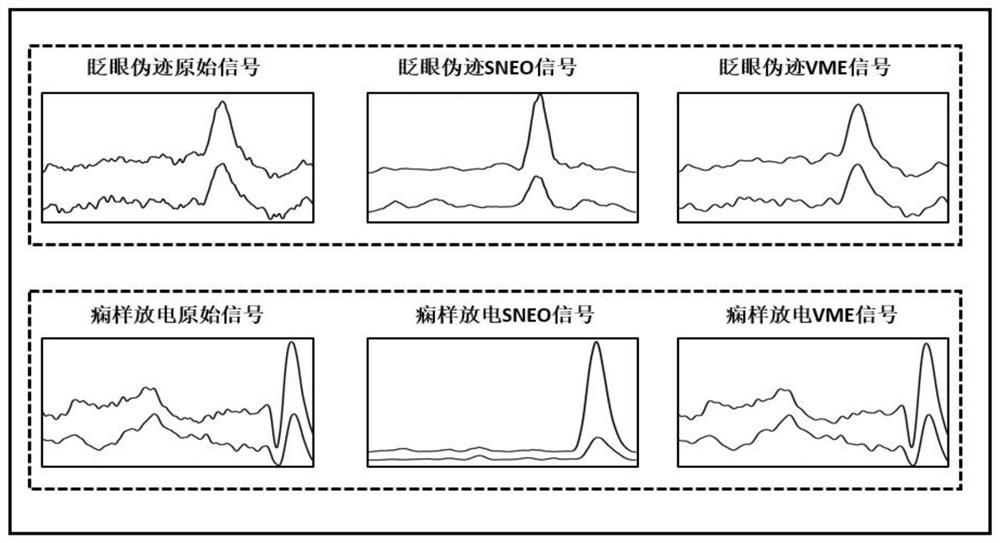Intelligent classification method for distinguishing electroencephalogram blink artifacts and frontal electrode epilepsy discharge
A classification method and artifact technology, applied in medical science, sensors, diagnostic recording/measurement, etc., can solve problems such as eye blink artifact detection interference and failure, achieve accurate automatic classification, and overcome the effects of low detection accuracy
- Summary
- Abstract
- Description
- Claims
- Application Information
AI Technical Summary
Problems solved by technology
Method used
Image
Examples
Embodiment Construction
[0070] The present invention will be described in detail below in conjunction with the accompanying drawings and specific embodiments.
[0071] Such as figure 1 , figure 2 and image 3 As shown, the implementation steps of the classification method of blink artifacts and frontal pole epileptiform discharge signals based on multi-signal multi-dimensional feature representation have been introduced in detail in the content of the invention, that is, the technical solution of the present invention mainly includes the following steps:
[0072] Step 1. Perform filtering processing and signal cutting on the EEG signal.
[0073] Step 2. Perform smoothing nonlinear energy operator (SNEO) signal transformation and variational mode extraction (VME) signal transformation on the EEG signal processed in step 1 to obtain a SNEO data set and a VME data set.
[0074] Step 3, performing 20-dimensional feature extraction on the signals corresponding to the three data sets.
[0075] Step 4,...
PUM
 Login to View More
Login to View More Abstract
Description
Claims
Application Information
 Login to View More
Login to View More - R&D
- Intellectual Property
- Life Sciences
- Materials
- Tech Scout
- Unparalleled Data Quality
- Higher Quality Content
- 60% Fewer Hallucinations
Browse by: Latest US Patents, China's latest patents, Technical Efficacy Thesaurus, Application Domain, Technology Topic, Popular Technical Reports.
© 2025 PatSnap. All rights reserved.Legal|Privacy policy|Modern Slavery Act Transparency Statement|Sitemap|About US| Contact US: help@patsnap.com



